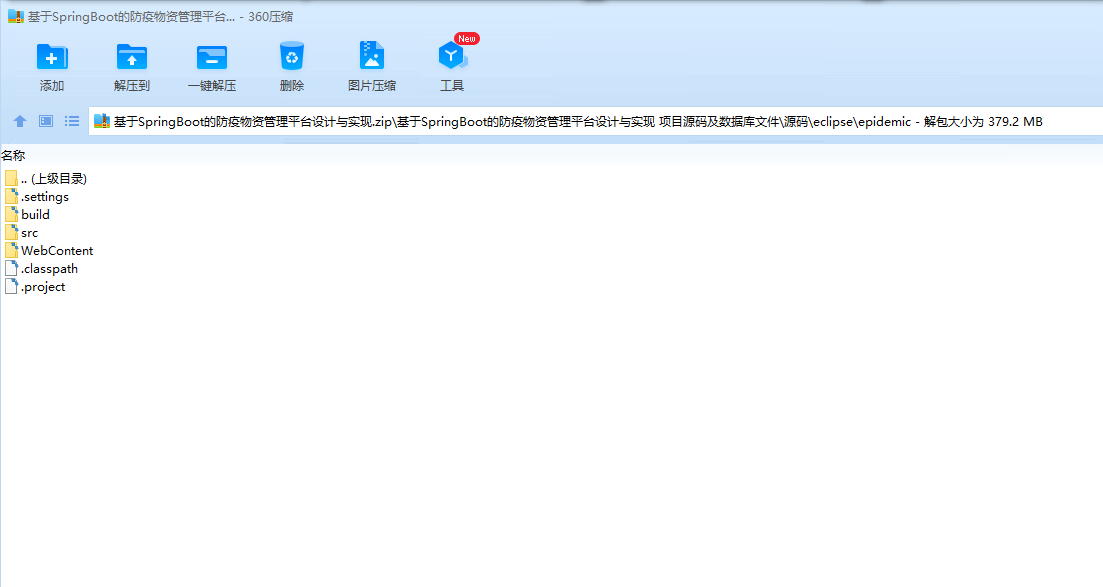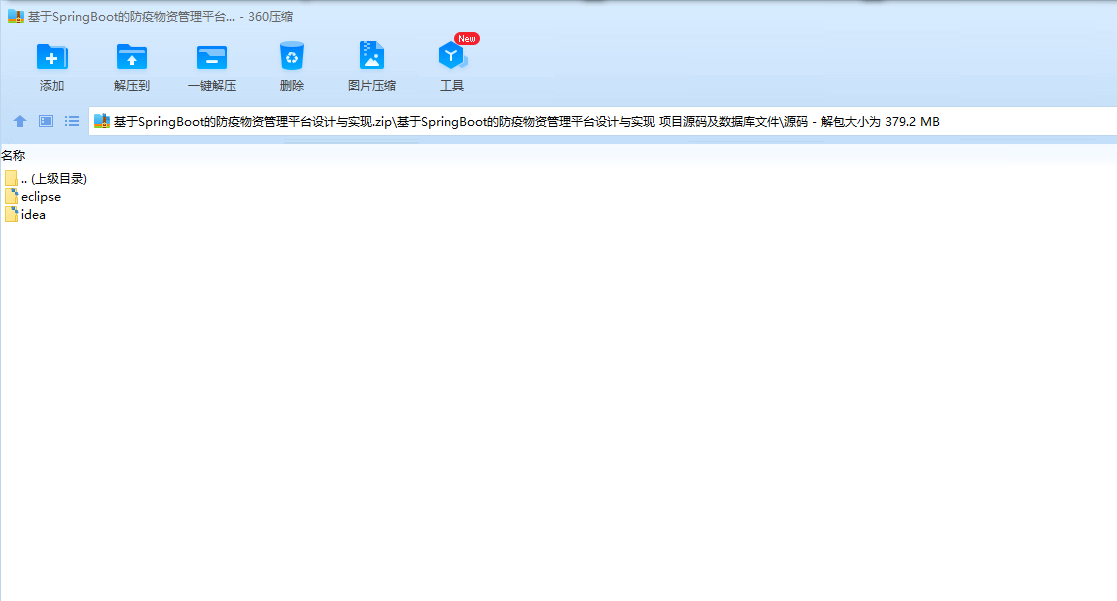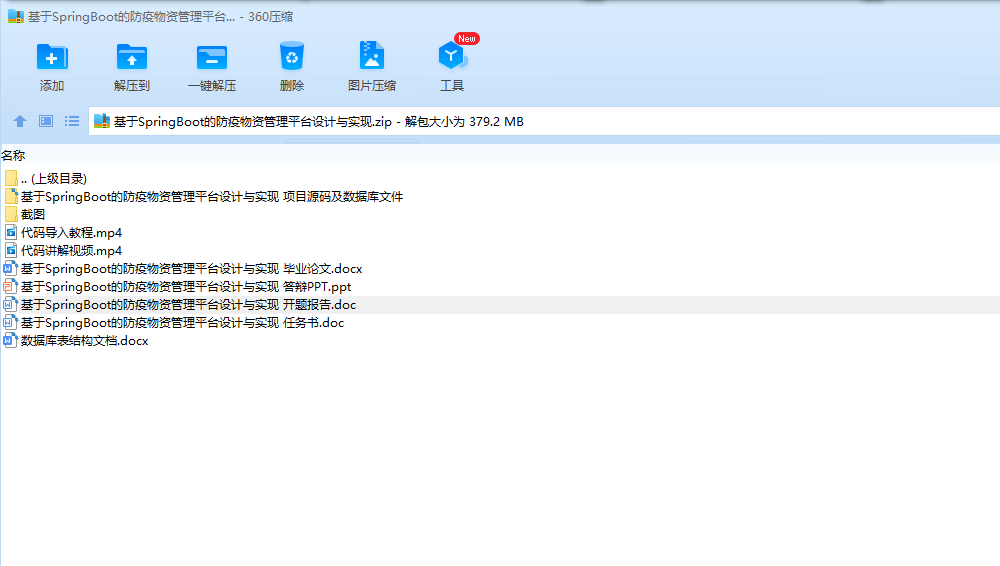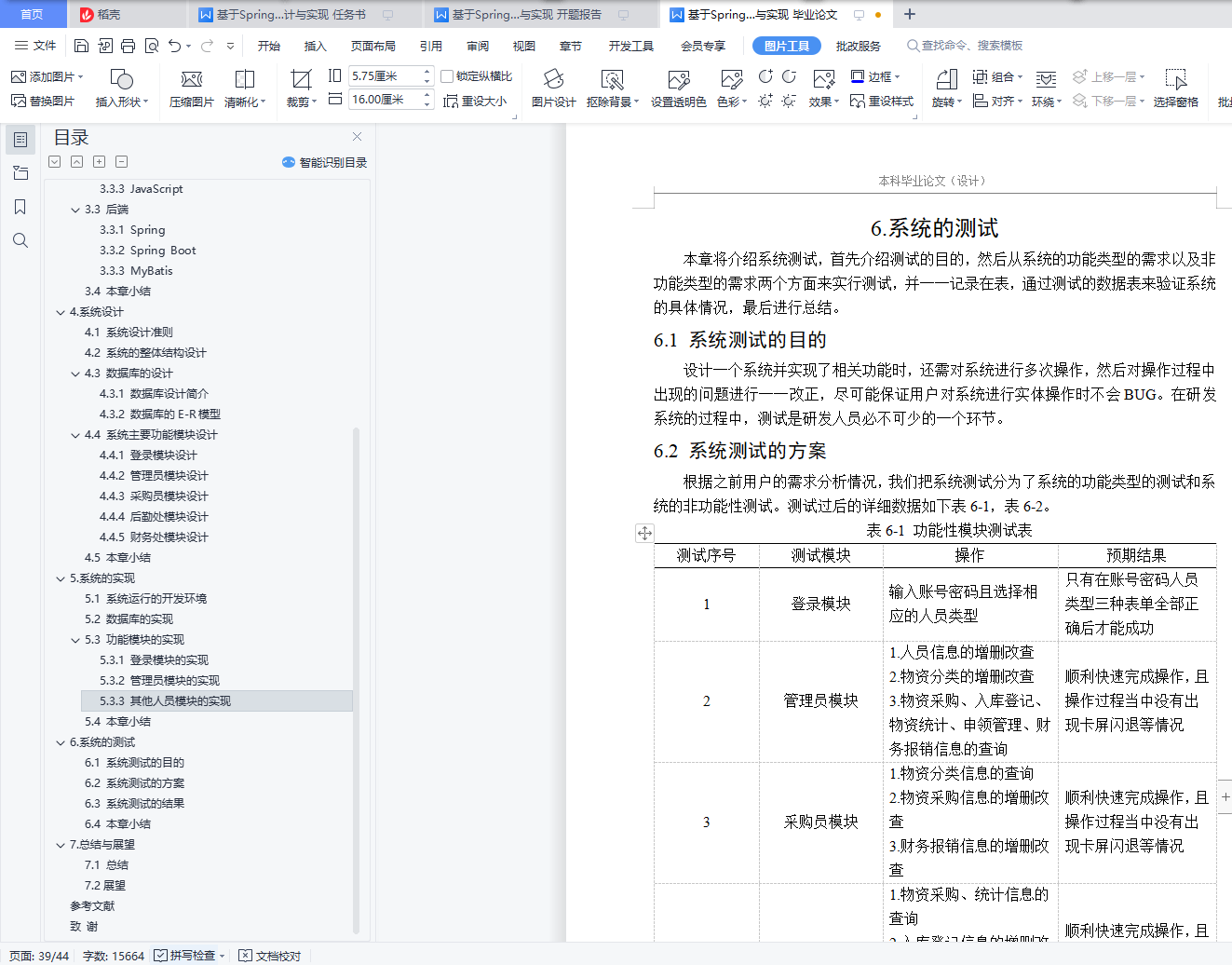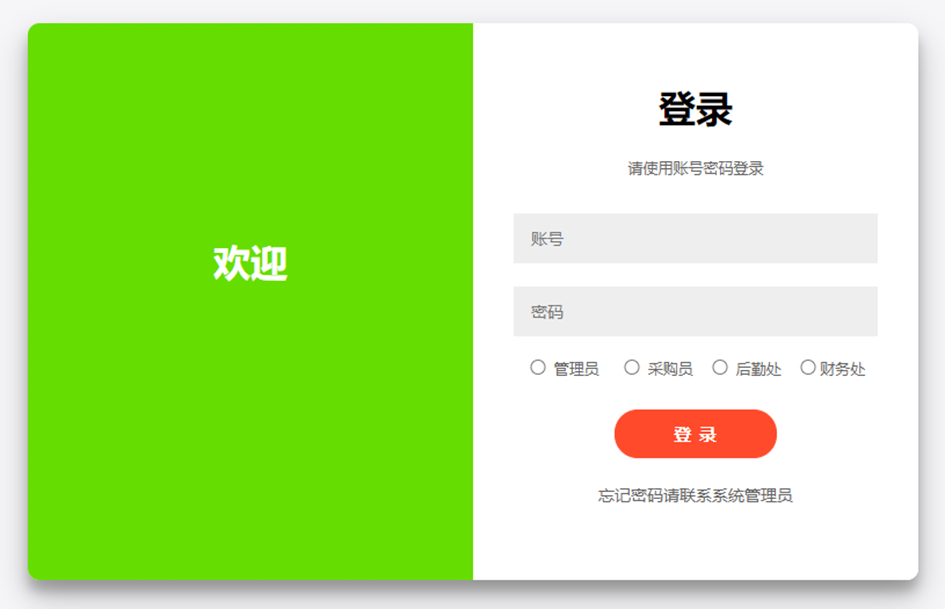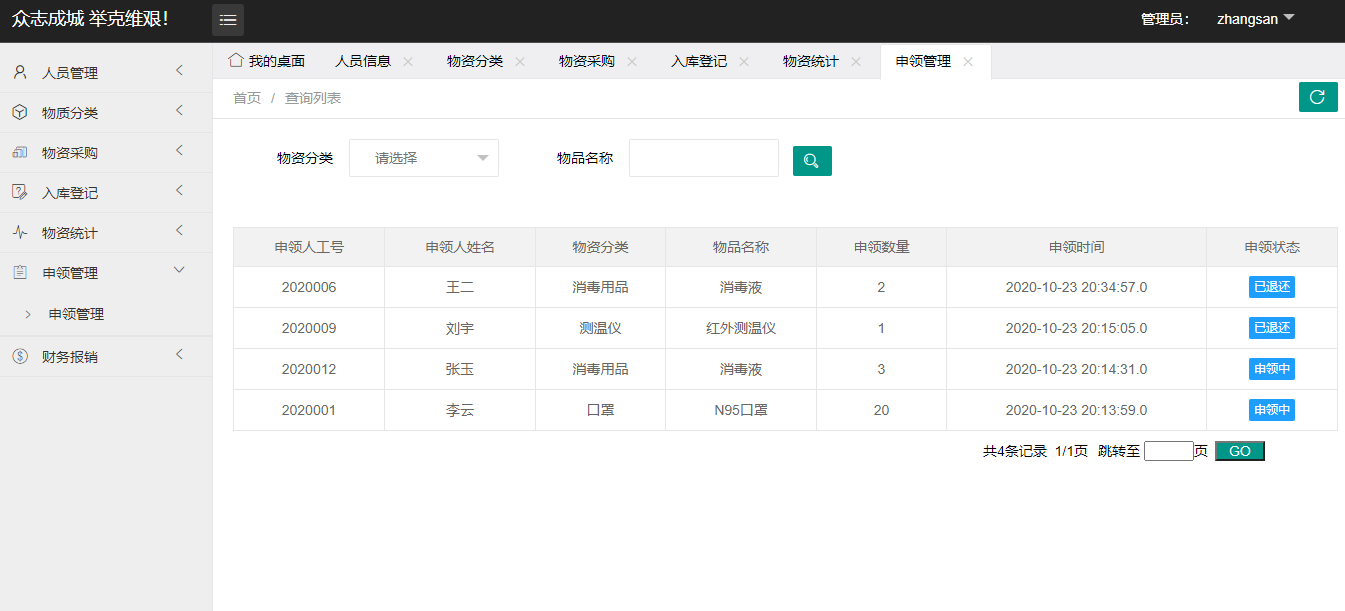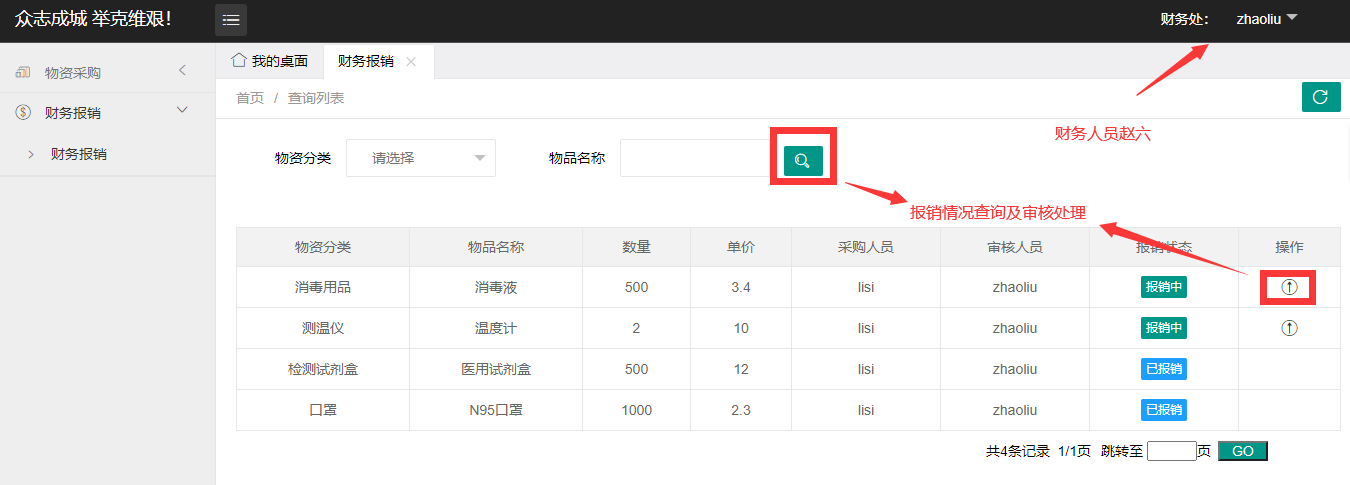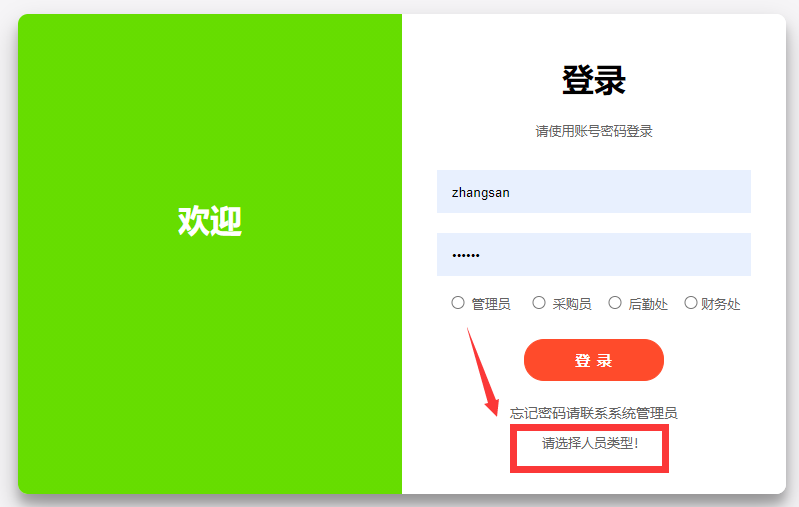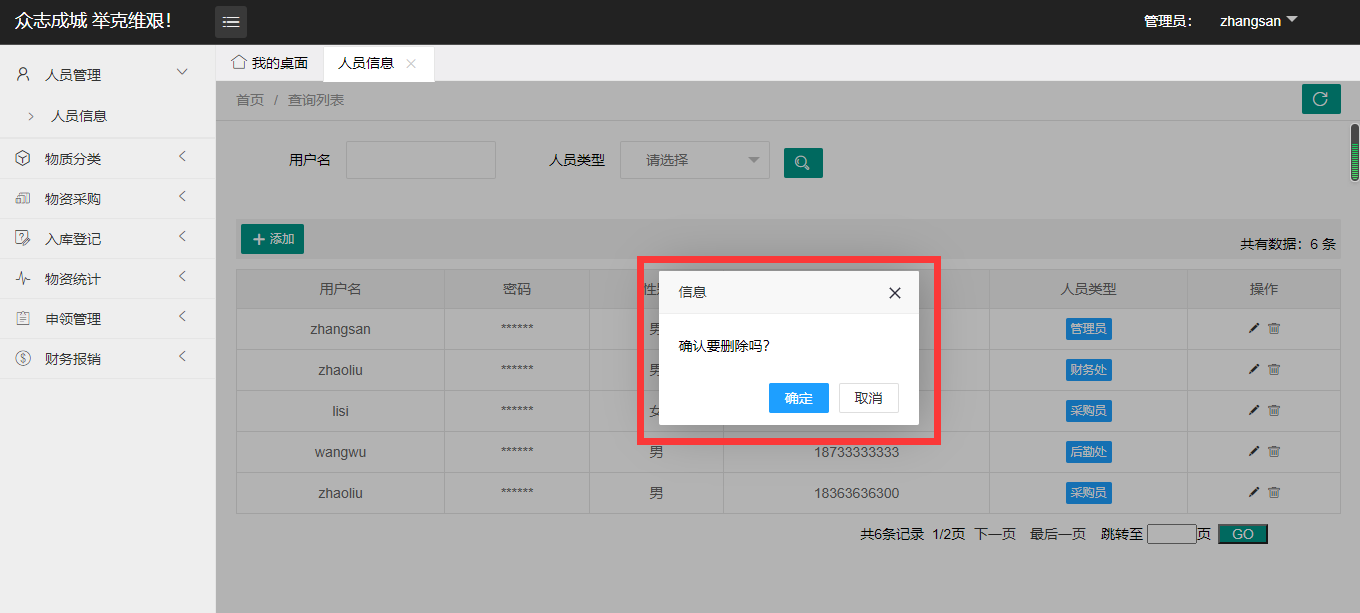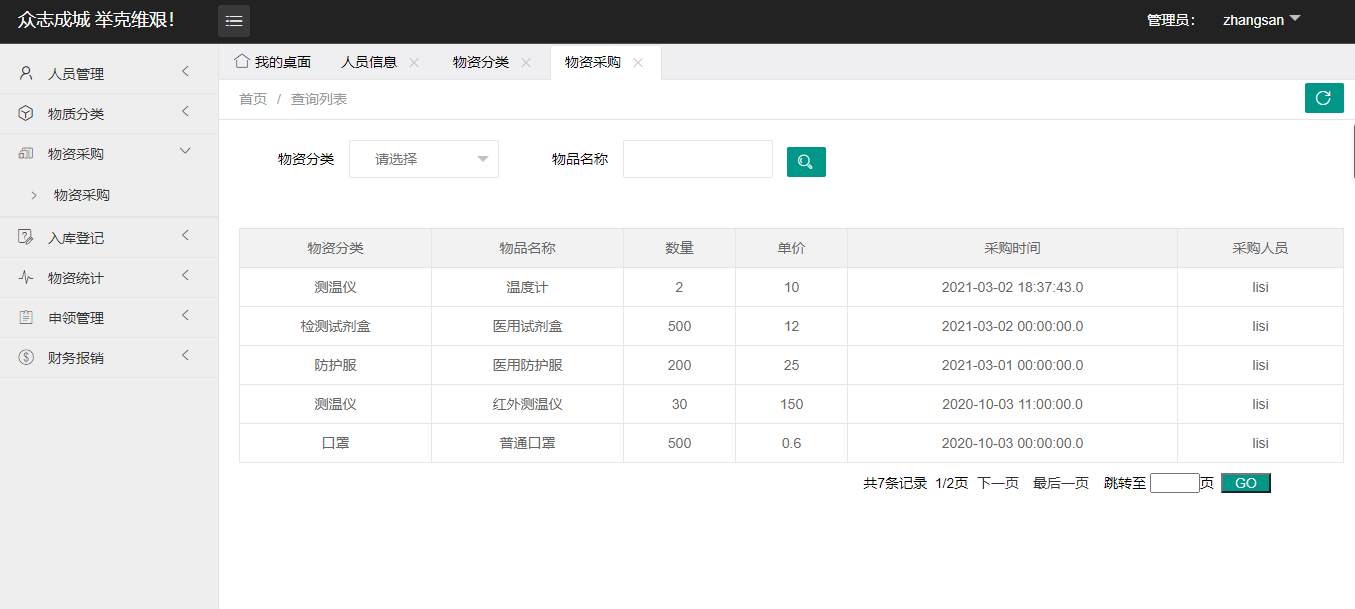摘 要
物资的运营及分配是每一个可持续化发展区域的必备要素。例如医院,它每天都需要准备额外的物品,以此来弥补应急状态下物资短缺的情况。尤其是在新冠疫情背景下国家的“封城”处理,更加需要时时刻刻跟进防疫设备的使用量,以保证医院内防疫物资的管理。目前大部分医院采用传统的人工记账的方式进行物资管理,这种手写登记入库会出现物资记录不精确、人员分配混乱等问题。此种迹象说明目前的防疫物资管理的需要一定的改善,研发一个能解决当前物资管理问题的线上系统尤为重要。
利用互联网技术的非接触性和便携性,本文基于Spring Boot的框架,构建一个一体化、系统化、线上线下相结合的防疫物资管理系统,提高医院在面临重大突发疫情时物资管理的运营效率和应对能力,以筑牢抗疫的防线。
关键词:防疫管理;防疫物资;物资管理;管理平台;Spring Boot
Abstract
The operation and distribution of materials are the essential elements for every sustainable development area.Hospitals, for example, need to prepare extra items every day to make up for material shortages in emergency situations.Especially in the context of COVID-19, the "lockdown", it is necessary to follow up the use of epidemic prevention equipment all the time to ensure the management of epidemic prevention materials in hospitals.At present, most hospitals use the traditional manual bookkeeping method for material management, such handwritten registration and warehousing will appear inaccurate material records, chaotic personnel allocation and other problems.Such signs indicate that the current management of epidemic prevention materials needs to be improved, and it is particularly important to develop an online system that can solve the current material management problems.
Using the non-contact and portability of Internet technology, this paper builds an integrated, systematic and combined online and offline epidemic prevention materials management system based on the framework of Spring Boot, so as to improve the operation efficiency and response capacity of hospital material management in the face of major emergencies, so as to build a strong defense line against the epidemic.
Key words: epidemic prevention management; epidemic prevention materials; material management; management platform; Spring Boot
目 录
1.绪论 1
1.1 项目研究的背景 1
1.2 研究的目的和意义 1
1.3 国内外管理状况 1
2.需求分析 3
2.1 需求概述 3
2.2 系统功能性需求分析 3
2.3 系统非功能性需求分析 5
2.4 本章小结 6
3.主要开发工具及关键技术 7
3.1 运行环境 7
3.1.1 IDEA 7
3.1.2 MySQL 7
3.1.3 Tomcat 7
3.2 前端 8
3.2.1 JSP 8
3.2.2 CSS 8
3.3.3 JavaScript 8
3.3 后端 9
3.3.1 Spring 9
3.3.2 Spring Boot 9
3.3.3 MyBatis 9
3.4 本章小结 9
4.系统设计 10
4.1 系统设计准则 10
4.2 系统的整体结构设计 10
4.3 数据库的设计 11
4.3.1 数据库设计简介 11
4.3.2 数据库的E-R模型 12
4.4 系统主要功能模块设计 15
4.4.1 登录模块设计 15
4.4.2 管理员模块设计 16
4.4.3 采购员模块设计 17
4.4.4 后勤处模块设计 18
4.4.5 财务处模块设计 19
4.5 本章小结 20
5.系统的实现 21
5.1 系统运行的开发环境 21
5.2 数据库的实现 21
5.3 功能模块的实现 24
5.3.1 登录模块的实现 24
5.3.2 管理员模块的实现 25
5.3.3 其他人员模块的实现 31
5.4 本章小结 32
6.系统的测试 33
6.1 系统测试的目的 33
6.2 系统测试的方案 33
6.3 系统测试的结果 34
6.4 本章小结 34
7.总结与展望 35
7.1 总结 35
7.2展望 35
参考文献 36
致 谢 38



